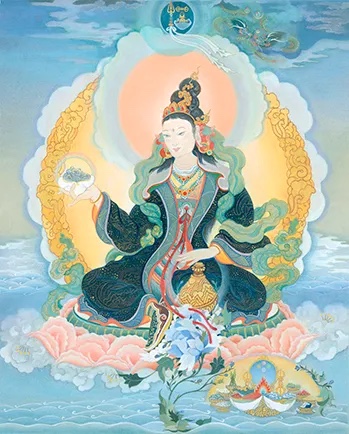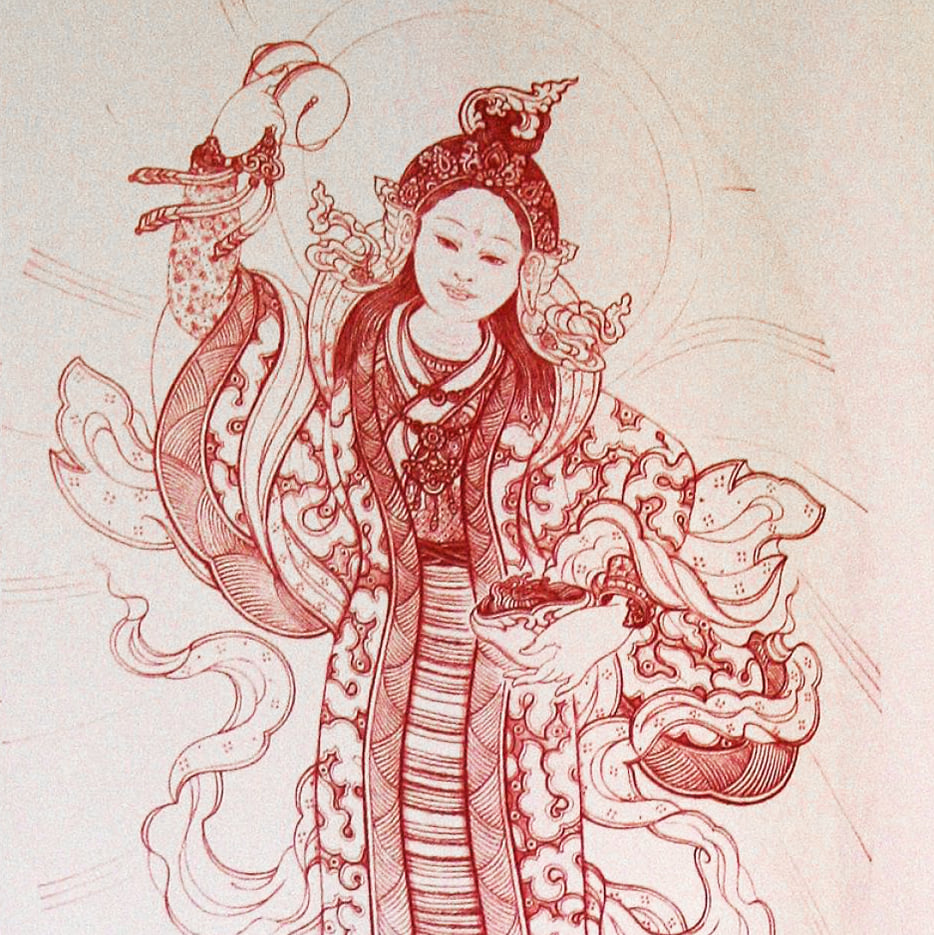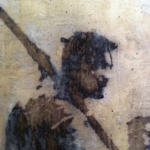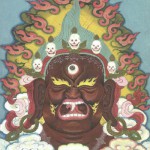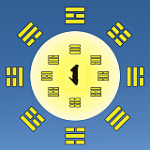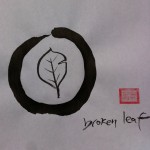Wednesday
Who Was Yeshe Tsogyal?
By Holly Gayley
Holly Gayley discusses the power of Padmasambhava’s foremost disciple and consort, Yeshe Tsogyal, and the life of one of her modern emanations.
Yeshe Tsogyal is the preeminent lady of Tibetan Buddhism. While most—if not all—of what we know about her life is highly mythologized, she is revered by Tibetans as a foremost disciple and consort of Padmasambhava, the eighth-century tantric master credited with a seminal role in establishing Buddhism in Tibet. Yeshe Tsogyal is also celebrated for transcribing Padmasambhava’s teachings and concealing them as treasures across the Tibetan and Himalayan landscape, to be revealed by successive tertöns, or “treasure revealers,” during times of strife.
In her well-known namthar, or story of “complete liberation,” which was revealed by the seventeenth-century tertön Taksham Nuden Dorje (available in English translations by Keith Dowman and the Padmakara Translation Group), Yeshe Tsogyal is portrayed as a gutsy woman striving for enlightenment. She faces various trials while practicing meditation in mountain solitudes: scorn from villagers, torment by demons, starvation, and even rape. Through these trials, she is shown transforming adversity into fuel for her practice and gaining realization. Moreover, in her namthar, one finds the striking statement by Padmasambhava that a woman with strong determination has a greater potential for attaining enlightenment than a man. In this way, Yeshe Tsogyal serves as an important example of a woman who traversed the Buddhist path.
However, if we think of Yeshe Tsogyal primarily as an ancestor who demonstrates that enlightenment is possible in female form, we grossly underestimate her significance for Tibetans. Moreover, we run into the problem (as with so many female figures in Buddhist literature) of establishing her historicity.
For Tibetans, Yeshe Tsogyal is not just a figure from the distant past; she remains an active and enduring presence. In the outer frame of her namthar, we see her portrayed as a timeless being—an emanation of Sarasvati—who took human form in Tibet for the sake of propagating the dharma. And at the end of her tale, before dissolving into space, Yeshe Tsogyal promises to continue to respond to the prayers of devotees, to appear to adepts in visions, and to continue to send forth emanations.
But her story does not end there. Over the centuries, Yeshe Tsogyal has remained accessible to ordinary Tibetans through numerous liturgies that supplicate her. In addition, her potent blessings are understood to remain in the places she practiced as well as the objects she touched (strands of hair, articles of clothing, ritual implements, etc.), considered to be relics of contact. To spiritual virtuosos, both male and female, Yeshe Tsogyal also appears in visions, posing riddles, offering encouragement, or expounding on the contents of a treasure teaching.
What’s more, Yeshe Tsogyal’s presence continues in the lives of historical women who are regarded to be her emanations. Indeed, exceptional women in the Nyingma school of Tibetan Buddhism are often identified as an emanation of Yeshe Tsogyal and sometimes referred to as “Yeshe Tsogyal in person.” Her emanations include the few female tertön known to us, such as Jomo Menmo (thirteenth century) and Sera Khandro (early twentieth century), as well as Mingyur Paldrön, the daughter and successor of the famed seventeenth-century tertön Terdak Lingpa, founder of Mindroling Monastery outside of Lhasa.
From one perspective, we could say that Yeshe Tsogyal serves as an authoritative precedent, creating a cultural space for female religious authority within the otherwise male-dominated Buddhist milieu in Tibet. From another perspective, through the women identified as her emanations, Yeshe Tsogyal continues to be an active presence, intervening in the lives of ordinary Tibetans.
To illustrate this, let me introduce a contemporary female tertön from the region of Golok in eastern Tibet: Khandro Tare Lhamo (1938–2002), an emanation of Yeshe Tsogyal who served as a beacon of hope for her local community during a devastating chapter of Tibetan history. The period leading up to and including the Cultural Revolution (1966–76) witnessed the destruction of most visible symbols of Tibetan culture: monasteries were closed, texts were burned, sacred objects were looted, monks and nuns were forced to defrock, and public religious observances were forbidden. Many lamas fled into exile or died in prison, including Khandro Tare Lhamo’s first husband and three brothers, who were incarcerated in the late 1950s.
Perhaps because she was a woman, Khandro Tare Lhamo was spared imprisonment, though I was told that she did endure beatings. On one harrowing occasion, officials placed her bare chest on a hot wood-burning stove. According to the old woman who told me this story, Khandro Tare Lhamo reflected on the far greater sufferings of beings in the hell realms, and as a result she had no burn marks afterward.
One cannot find such tales in her namthar, Spiraling Vine of Faith. Since it was published in China, most of her personal misfortunes and hardships are left out, likely due to the continued sensitivity of the “Tibet question.” For this reason, the stories told about Khandro Tare Lhamo in her namthar emphasize the miracles she performed for her local community, rather than the trials she endured. For example, during a famine in the wake of the Great Leap Forward, there is no mention of the hunger she and others must have faced; we read only of her miraculous ability to multiply a measure of rice to feed those around her. And while working as part of a crew constructing a pen for wild yaks, she is reported to have carried a stone too heavy for a group of men to lift, leaving an imprint of her hand in it.
These stories show how Khandro Tare Lhamo, as an enlightened being who took rebirth for the sake of others, embodied the paradox of being confined to her historical circumstances while seeming to transcend the laws of nature. Though miraculous in tenor—as when she reportedly stopped a rockslide threatening to overwhelm a crowd with a simple gesture of her hand—her activities were nonetheless grassroots in scale, addressing the immediate needs of her local community.
Khandro Tare Lhamo’s role in the Buddhist revival in Golok beginning in the 1980s was possible due to her identification with Yeshe Tsogyal. With the onset of China’s policy of “reform and opening,” religious observances were once again allowed, and Tibetans began an arduous process of rebuilding monasteries and recovering and reprinting precious texts. In Golok, treasure revelation played a significant role in this revival as a means to recover ancient teachings from amidst the debris. For the Nyingma, treasures are meant to be revealed during troubled times, when they promise to heal the damage to the teachings and beings, thereby heralding a new era for Buddhism and society to flourish.
As an emanation of Yeshe Tsogyal, Khandro Tare Lhamo was understood to have access to the teachings of Padmasambhava in the form of treasures, sealed in the Tibetan landscape and also in the mind stream of the tertön. Together with her second husband, Khandro Tare Lhamo revealed a twelve-volume corpus of treasure literature, including a volume dedicated to Yeshe Tsogyal and a series of female deities. From the mid-1980s onward, the couple traveled and taught together, propagating these treasures.
As these stories show, for Tibetans, Yeshe Tsogyal is more than an ancestor from the distant past or simply a role model to affirm women’s potential for enlightenment. Indeed, she remains an active presence in the lives of Tibetans–both men and women–through rituals dedicated to her and through the historical women who serve as her emanations. The well-known emanations of Yeshe Tsogyal mentioned above are only the tip of the iceberg. As time goes on, more and more stories of female adepts and spiritual teachers in Tibet are coming to light. Indeed, if present circumstances are any indication, for every female Buddhist teacher who made it into the historical record, there were at least a dozen or more on the ground. As the number of studies on exceptional Tibetan women grows, let us hope that we can consider not only issues of gender but also the impact and influence of these women on Buddhist history.
Reposted from Lion’s Roar December 1, 2007
*Judith Simmer-Brown will host Yeshe Tsogyal and the Feminine Principle through Shambhala Online beginning June 17, 2023. To Learn more and register please click here.
Entries filed under Dharma Teachings
Creating a Culture of No Mistake – HIGHLIGHT
COLUMN: Dharma Teaching Gentle and Tough originally published on broken leaf guest article by Acharya Noel McLellan Gentleness is nice and all, but it’s a tough world out there. We can’t always live in a protected world of soft things, kind people, and the sounds of running water. There are ... continuePosted July 30, 2014 by
Obstacles on the Path – HIGHLIGHT
photosTeaching by Sakyong Mipham Rinpoche If there’s a rock in your path, you have to move it, go around it, or climb over it. The same is true in meditation, says Sakyong Mipham. You can’t just pretend obstacles aren’t there. You have to relate to them. In meditation, ... continuePosted July 28, 2014 by
3 Ways Buddhism Can Help You Heal a Broken Heart – HIGHLIGHT
COLUMN: Dharma Teachings guest article by Susan Piver Nothing feels worse than a broken heart, the kind you get when someone you love ends the relationship. Feelings of shame, remorse, grief, rage, and terror can overwhelm even the most stable human being. Heartbreak has the power to reframe ... continuePosted July 9, 2014 by
The Simple Technique that Changed My Life – HIGHLIGHT
On Meditation guest article by Travis May, St. Petersburg, FL originally published on elephant journal During meditation instruction I try to convey some importance about the part of the technique that involves letting go of our thoughts and returning to the breath. But, I don’t think that I really ... continuePosted June 25, 2014 by
Reclaiming our Sensitivity – HIGHLIGHT
COLUMN: Dharma Teachings article and photos by Evan Silverman, Karme Choling Recently I had the special honor and privilege to be a meditation instructor for a half-dathun (two-week retreat) led by Acharya Suzann Duquette and Shastri Ethan Nichtern. I’ve known both of them for a few years now, ... continuePosted June 20, 2014 by
Understanding the Proclamation of Goodness – HIGHLIGHT
Keniley, Albuquerque Shambhala Center COLUMN: Dharma Teachings by Russell Rodgers, Nelson, BC This simple, four line supplication composed by Sakyong Mipham Rinpoche has a lot in it. There is one meaning on the level of ordinary thoughts and associations. Then, there is another level that words cannot directly express ... continuePosted June 11, 2014 by
Is Shambhala Just for Seekers? – HIGHLIGHT
Photo Miksang de Joey JohannsenCOLUMN: Dharma Teaching by Russell Rodgers, Nelson, BC Recently I was at a gathering of meditation instructors, and the main topic of conversation was why so many people come through our doors at open houses, and so few “stick”. The conversation, by now very ... continuePosted May 30, 2014 by
Giving and Knowing – HIGHLIGHT
COLUMN: Dharma Teachings Investigating the Practice of Generosity by Acharya Michael Greenleaf, Barnet, VT Generosity is our genes. The word comes from the root genus, meaning of good or noble birth. Noble, in turn, comes from the root gnosis — to know. Generosity speaks to the natural expression of ... continuePosted April 25, 2014 by
Obstacles and Antidotes – HIGHLIGHT
Ekajati: Queen of the Mamos, thangka painting by Chogyam Trungpa RinpocheTeachings on Don Season by Shastri Andrew Sacamano As we move from winter to spring to summer to fall there is a natural process that takes place in the earth. There is a period where the earth needs ... continuePosted February 22, 2014 by
The Virtuous Leader – HIGHLIGHT
COLUMN: Dharma Teachings Exploring the Shambhala Path of Warriorship and the Wisdom of the I Ching by Acharya Daniel Hessey For the past fifteen years I have been deeply engaged in studying and translating the I Ching from the ancient Chinese into modern English. In fact, I have translated ... continuePosted December 27, 2013 by
Un-Freeze Tag – HIGHLIGHT
COLUMN: Dharma Teachings by Acharya Noel McLellan from his blog broken leaf We are utterly overwhelmed. It’s tempting to let that be the whole post. Courtney Martin, activist, author, and a wonderful spokesperson for the millennial generation, addresses Gen Y’s current state of collective mind: “We are not apathetic. What we ... continuePosted October 26, 2013 by
Tears, Tails, Dickey and Duane – HIGHLIGHT
“My friends, we have each other.” by Susan Piver “I love being alive and I will be the best man I possibly can. I will take love wherever I find it and offer it to everyone who will take it…I will seek knowledge from those wiser and teach ... continuePosted October 19, 2013 by
Cooking “Me” into “We” – HIGHLIGHT
The Marriage Vow…and the culture of Enlightened Society COLUMN: Acharya Corner by Acharya Susan Chapman This summer I performed two wedding ceremonies. Both couples were obviously in love and expressed their vows to each other with deep, tearful authenticity, witnessed by family and friends. My husband was there to ... continuePosted October 8, 2013 by
Casting Spells: the Magic of Letters – HIGHLIGHT
COLUMN: Dharma Teachings by Russell Rodgers, Nelson, B.C. Consider for a moment the letters on this page. On one level, letters have been familiar since we were four years old. You might feel impatient: “no big deal, let’s move on. I know all about letters.” However, as a meditator, ... continuePosted August 30, 2013 by
broken leaf – HIGHLIGHT
COLUMN: Dharma Teachings by Acharya Noel McLellan Walking from here to there on any given day we might encounter, among other things, a broken leaf on the sidewalk. Most likely, we will not see it. Our eyes see it, but our minds are elsewhere, preoccupied with things that ... continuePosted August 24, 2013 by
![]() RSS feed for the Dharma Teachings category
RSS feed for the Dharma Teachings category
View all posts from authors in Dharma Teachings: Jillian_Johnson

